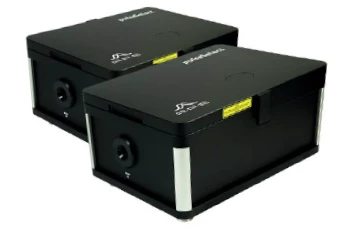Description
The pulseSelect Dual is a single pulse selector using two acousto-optical Bragg cells. The pulseSelect Dual comes in two variants:
pulseSelect Dual (serial)
This version is designed to allow for highest contrast ratio of above 6000:1 by placing two Bragg cells, both synchronized to common clock, in serial configuration (i.e. one beam through two Bragg cells).
pulseSelect Dual parallel
This version is designed for selecting pulses from two synchronized laser sources, e.g. with different wavelength, simultaneously by placing two Bragg cells, both synchronized to one common clock with one common division ratio but independent delay settings, in parallel configuration (i.e. two separate beams each through one Bragg cells). The pulseSelect Dual has been developed for the special demands of femtosecond or picosecond laser technology. Pulse distortion is minimized by a low dispersive design and the use of reflective optics. The use of an acousto-optical selection element allows for high repetition rates and high contrast ratio.
APE PulseSelect Dual Standard
Specifications
| Wavelength Range: | 500 – 1600 nm |
|---|---|
| Max Laser Input Power: | 2 W |
| Input Frequency Range: | 70 – 85 MHz |
| Input Polarization: | Horizontal, Vertical |
Features
- High Contrast Ratio: Achieve a contrast ratio of above 6000:1 with the serial configuration, ensuring superior pulse selection performance.
- Dual Configuration Options: Choose between the serial and parallel configurations to suit your specific laser source requirements.
- Low Dispersion Design: Minimized pulse distortion through a low dispersive design and reflective optics, ideal for femtosecond or picosecond laser technology.
- Acousto-Optical Selection: Utilize acousto-optical Bragg cells for high repetition rates and enhanced contrast ratio.
- Wide Wavelength Range: Supports wavelengths from 500 to 1600 nm, with specific dual-band options available.
- Flexible Input Frequency: Compatible with input frequencies ranging from 70 to 85 MHz, with additional options available upon request.
- External Trigger Capability: Supports external triggering from single shot to 3 MHz input.
- Adjustable Division Ratio: Offers division ratios from fREP/20 to fREP/5000, with optional extensions available.
- Efficient Diffraction: Achieve diffraction efficiencies of approximately 25% to over 60% depending on the configuration and material used.
Applications
- Reduction of the repetition rate of mode-locked lasers
- Low dispersion
- Suitable for femtosecond (fs) and picosecond (ps) mode-locked lasers
- Division ratio down to fREP/2 (optional)
Frequently Asked Questions
What is the pulseSelect Dual?
What are the two variants of the pulseSelect Dual?
What is the difference between the pulseSelect Dual (serial) and pulseSelect Dual parallel?
What is the pulseSelect Dual used for?
What are the pulse selection specifications of the pulseSelect Dual?
Similar Products
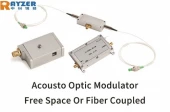

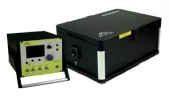
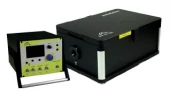
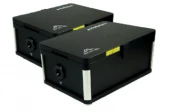
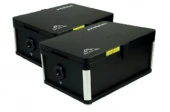
Your inquiry has been received.
Create an account by adding a password
Why create an account?
- Auto-complete inquiry forms
- View and manage all your past messages
- Save products to your favorites
- Close your account anytime — no hassle
